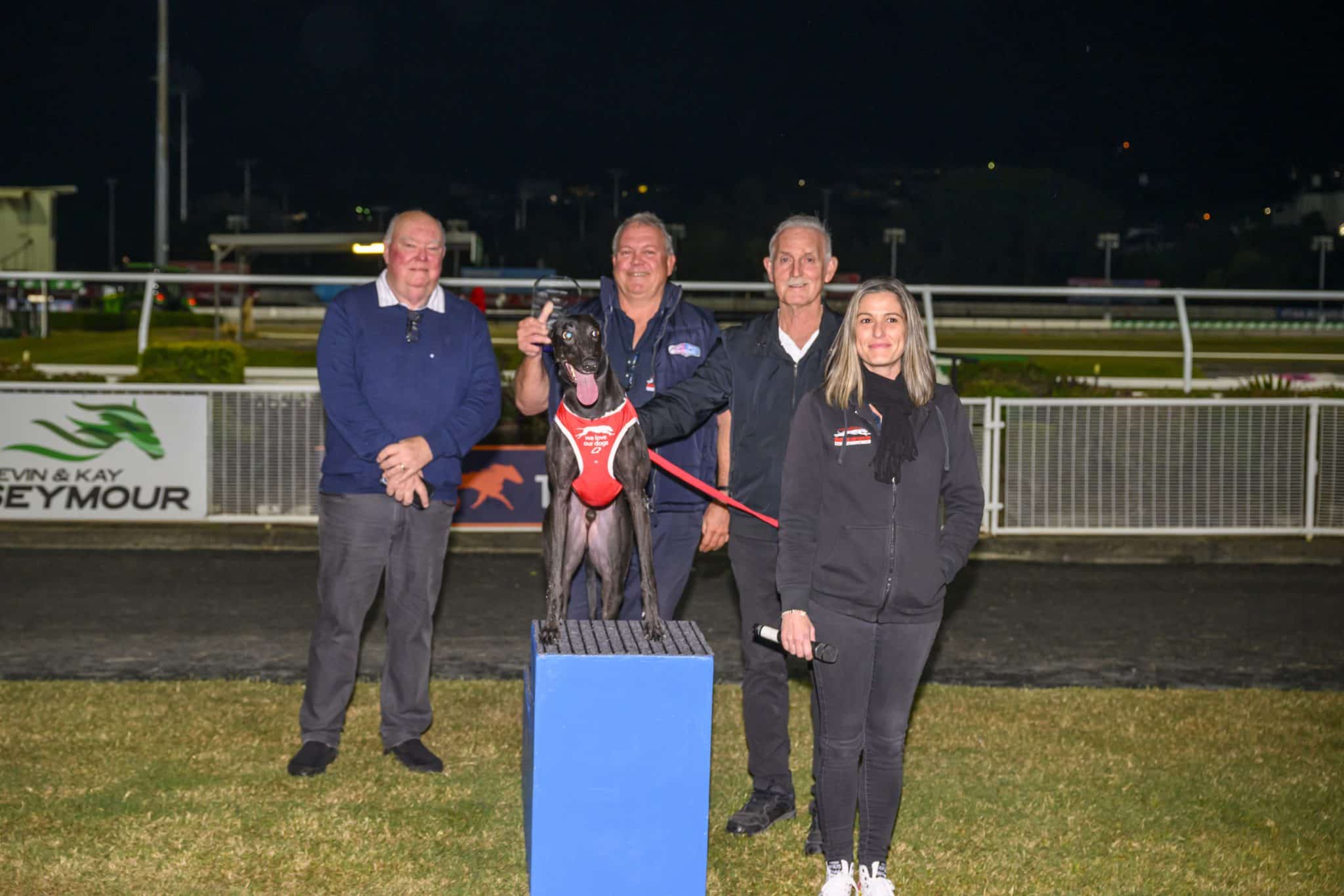
Caption: Another victory presentation for celebrated Queensland trainer Tony Zammit (second from right). (Photo: Box 1 Photography)
MY introduction into greyhound racing was as a family enterprise, when my brother George and I established a trial track at Deception Bay back in the 1970s.
It was the perfect introduction for me to many leading trainers of the time and gave me the opportunity to talk to them, ask questions and find out what they did to prepare their dogs.
We saw it all the time, on a daily basis, with trainers like Syd and Percy Norris, Jimmy Pritchard and Peter Rayner working their dogs.
I trained my first winner in 1976 at Lawnton and by the 1980s had a team together at our new base at Burnside Road in Gilberton near Beenleigh.
What I learnt from those trainers, and put into practice myself, has never changed. I found successful people are only too happy to talk to you.
We chose greyhound racing rather than horses or harness horses like my dad Sam, because the greyhound industry was booming at the time and the horse industry needs jockey, strappers, so much infrastructure.
In greyhound racing, anyone can do the training themselves without having to rely on someone else.
Whenever anyone approaches me about getting into greyhounds, the first thing I advise them is to make an effort to talk to trainers who are winning races.
With greyhound training, it is easy to have one or two in a backyard. You don’t need stables, floats … you get the picture.
With such prizemoney as is available today, there is a huge incentive to give greyhound racing a go.
When I am approached by newcomers, the first thing I ask is if they want to train themselves or be owners.
There are no secrets to training, just keep your dog healthy and do something with the dog every single day, gallop, walk etc.
I have spoken to athletes in many sports and the first thing they tell me is that their training is every single day. This is something we took into account way back when we started and my training has never changed.
Dogs must be kept active every single day.
Since my wife Maree and I moved from Burnside Road to our new property on the way to the Gold Coast, we have kennels for up to 10 dogs and at present have eight in training.
We still do the same routine.
Our dogs are given a day off after they race and a day off before they race, but in between we take them to a nearby 300m straight and call them up every day.
I often put two together because I believe they like competition.
I also use Capalaba for young dogs because the drag lure in front of the boxes helps them to be good beginners.
My only change from this routine is if the dogs get a bone on Sundays, then they do not gallop.
The feeding routine has not changed. Dry food and meat, a mixture of roo and beef. Vegetable oil, B Complex, potassium, magnesium which is very important, chia seeds, and plenty of water, two cups on their dinner.
Breakfast is Weetbix, water, milk powder, glucose, calcium and vitamin E.
Newcomers’ entry into greyhound racing depends on what they can afford.
My first recommendation for newcomers is to buy a well-bred pup out of a proven bitch. But if she is unproven, then buy from a bitch that won over 500 metres on a city track.
Expect to pay around $10,000. The old days of getting such a pup for $4000 are gone.
Syndication is ideal if that $10,000 pup price is too much. My nice dog Adulate has 10 owners in his syndicate and he has won $115,000. De Ferran has won $120,000 and never won a big race.
In the old days, we thought having a dog that won $100,000 meant it was a world beater. The prizemoney is so good these days.
Newcomers to training do one major thing wrong. They do not work their dogs hard enough or often enough.
They must also remember NOT to overfeed a greyhound that is racing. Obviously the diet depends on the size of the dog.
Dehydration is another problem with greyhounds and newcomer trainers must be aware of this.
When we have a dog racing at night, we will give it a drink of Sustagen and water before it goes to the track. I don’t like dogs going racing on an empty stomach.
Greyhounds are very smart animals. When they see you come into the kennels dressed in white shirt and black pants, they soon get to know it is race day.
With all this advice, I still believe a program of education for newcomers would be very beneficial. Something similar has been run in the past.
A lot of people are too shy to ask questions especially of leading trainers, but such an education program would negate that.









